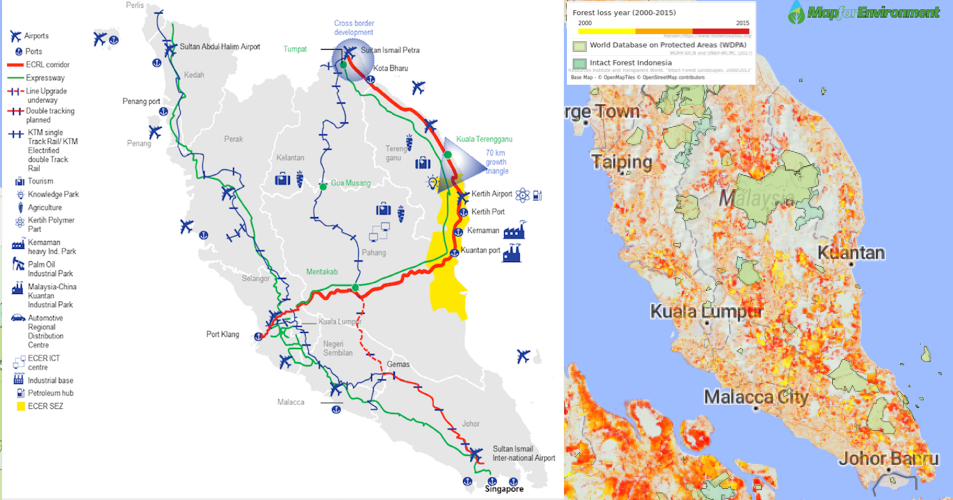- Work on the East Coast Rail Link, a Chinese-backed cargo and passenger rail project that will connect Peninsular Malaysia’s east and west coasts, commenced August 9.
- The project aims to shift traffic from roads to rails, but will also lead to habitat loss and fragmentation in the peninsula’s forested heart.
- Developers have adopted mitigation measures, but areas of ecological significance will still be affected.
When Haissazc Shuqkin Hisham traveled home to the northeastern state of Kelantan to celebrate the major Muslim festival of Hari Raya this year, he had no idea it would end up taking him 17 hours.
The traffic jam started almost as soon as his car left the toll booths on the edge of Kuala Lumpur to climb across the mountain range that divides the Malaysian peninsula.
“It was horrible,” the 22-year-old intern at a local think tank recalls. “Possibly the worst thing ever. There were just so many cars.”
The journey, mostly by a two-lane highway, usually takes between six and seven hours, but on public holidays it’s not unusual for traffic jams to extend for scores of kilometers, particularly over the steep inclines and sharp turns of the mountains.
The East Coast Rail Link (ECRL) is being touted as an economic “game changer” for the country. The 600-kilometer electrified line will connect Kuala Lumpur with Kelantan through the rural states of Pahang and Terengganu, cutting traveling time to as little as four hours and easing pressure on the road network by getting more people and cargo onto trains. There are also plans to extend the line west to Port Klang, Malaysia’s busiest port
The government says the 55-billion-ringgit ($12.8 billion) project — which will be launched officially this Wednesday and is expected to be ready for use in 2024 — will boost trade and tourism and close the development gap between the country’s west and east coasts. Some seven passenger trains each day are expected to leave Kuala Lumpur to make the journey east, with cargo trains projected to carry 37 million tonnes a year of containers, iron ore, coal and other commodities by 2030.

The project will also traverse major river systems and cut through 357 hectares of protected forest where elephants, Malayan tapir and tigers roam. It will increase pressure on the Central Forest Spine (CFS), a conservation initiative designed to connect the country’s eight major forest complexes and ensure the habitat of some the country’s most iconic species is protected.
“The railway will affect so much of our ecosystem,” said Shariffa Sabrina Syed Akil, president of PEKA, a Malaysian NGO that has held a number of meetings with the railway developer. “Malaysia should have a forest spine, but now it’s all broken. This is where our wildlife runs into problems, trying to cross these areas. The CFS is just lip-service.”
China, which has been investing in transport infrastructure around the world as part of its “One Belt, One Road” campaign is heavily involved in the ECRL, triggering concern among opposition politicians that the project will benefit China more than it will Malaysia.
The project is being funded with a loan from state-owned China EximBank and will be built by China Communications Construction Company, which secured the contract through direct negotiation rather than competitive tender. Another Chinese company is also working on the expansion of the Kuantan Port, which includes the sprawling Malaysia-China Kuantan Industrial Park, and is a major station on the line.




